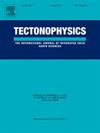Mapping structural geometry and tectonics of the continental margin of Vietnam and adjacent areas using an enhanced horizontal gradient of gravity data
IF 2.7
3区 地球科学
Q2 GEOCHEMISTRY & GEOPHYSICS
引用次数: 0
Abstract
The exploration of hidden structures beneath complex tectonic regions using potential field edge detection techniques poses a significant challenge. Traditional edge enhancement methods encounter inherent limitations, such as generating low-resolution outcomes or heavily depending on source depth. To overcome these challenges, we introduced an innovative edge detector called the Enhanced Horizontal Gradient (EHG). Through thorough testing on synthetic models (both 2D and 3D), we evaluated its performance against other conventional edge enhancement techniques. Our results demonstrate that the proposed detector effectively generates clear signals along source boundaries, minimizes the introduction of false edges, and operates independently of source depth. Applying the EHG method to Bouguer gravity anomalies, in conjunction with prominent tectonic faults, suture zones, mantle Bouguer anomalies, and Moho structure, provides substantial insights into comprehending the gravity characteristics of the continental margin of Vietnam and adjacent areas. Key findings from our research encompass the identification of discontinuities in the Red River Fault Zone, the absence of the Tam Ky-Phuoc Son (TK-PS) fault, the mapping of the extension of the magmatic zone in the oceanic region toward the northeast part of the Phu Khanh Basin, and a noticeable shift in gravity trends from NNE-SSW in the northeastern region of the East Vietnam Sea (EVS) to NNW-SSE direction. Moreover, the Moho depth obtained from gravity inversion, ranging from 7 to 54 km in the study area, closely corresponds with the intricate tectonics, offering conclusive evidence of a mechanism involving the flow of crustal magmatic material and associated uplift. In conclusion, our study suggests that interactions among tectonic plates likely play a role in shaping complex tectonic settings and the underlying uplift mechanism, ultimately influencing changes in bathymetry and seafloor structure.
利用增强水平梯度重力数据绘制越南大陆边缘及邻近地区的构造几何和构造图
利用势场边缘检测技术勘探复杂构造区域下的隐伏构造是一个重大挑战。传统的边缘增强方法存在固有的局限性,例如产生低分辨率结果或严重依赖于源深度。为了克服这些挑战,我们引入了一种创新的边缘检测器,称为增强水平梯度(EHG)。通过对合成模型(2D和3D)的全面测试,我们评估了其与其他传统边缘增强技术的性能。我们的研究结果表明,所提出的检测器有效地沿着源边界产生清晰的信号,最大限度地减少假边的引入,并且独立于源深度运行。将EHG方法应用于布格重力异常,结合突出的构造断裂、缝合带、地幔布格异常和莫霍构造,为理解越南大陆边缘及邻近地区的重力特征提供了重要的信息。本研究的主要发现包括红河断裂带的不连续性识别,Tam Ky-Phuoc Son (TK-PS)断裂的缺失,海洋区域岩浆带向富庆盆地东北部延伸的映射,以及东越南海东北部(EVS)的重力趋势从NNE-SSW向NNW-SSE方向明显转变。此外,重力反演得到的莫霍深度在7 ~ 54 km范围内,与研究区复杂的构造构造密切对应,为地壳岩浆物质流动及其隆升机制提供了确凿证据。总之,我们的研究表明,构造板块之间的相互作用可能在塑造复杂的构造环境和下伏的隆升机制中发挥作用,最终影响测深和海底结构的变化。
本文章由计算机程序翻译,如有差异,请以英文原文为准。
求助全文
约1分钟内获得全文
求助全文
来源期刊

Tectonophysics
地学-地球化学与地球物理
CiteScore
4.90
自引率
6.90%
发文量
300
审稿时长
6 months
期刊介绍:
The prime focus of Tectonophysics will be high-impact original research and reviews in the fields of kinematics, structure, composition, and dynamics of the solid arth at all scales. Tectonophysics particularly encourages submission of papers based on the integration of a multitude of geophysical, geological, geochemical, geodynamic, and geotectonic methods
 求助内容:
求助内容: 应助结果提醒方式:
应助结果提醒方式:


